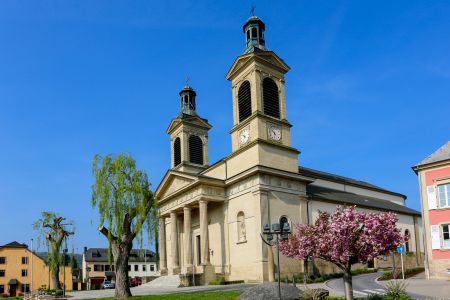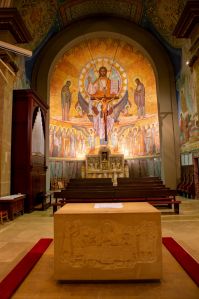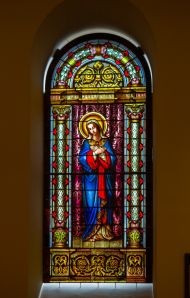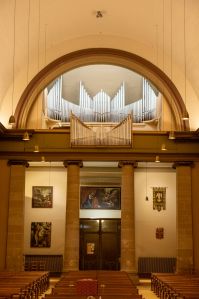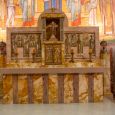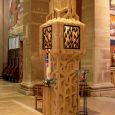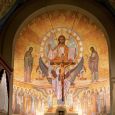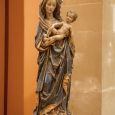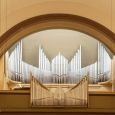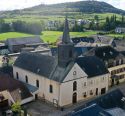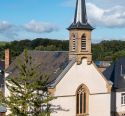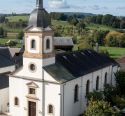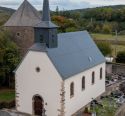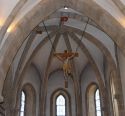Church | XIX | Neoclassical | Catholic Church




Map
Opening hours
01 January - 31 December
Mon 9.00 - 19.00
Tue 9.00 - 19.00
Wed 9.00 - 19.00
Thu 9.00 - 19.00
Fri 9.00 - 19.00
Sat 9.00 - 19.00
Sun 9.00 - 19.00
Description
The statues of the apostles Peter, with key and book, and Paul with sword and scroll, were sculpted in 1896 by the Harlem workshop Stracke.
The twin-tower church was built with stones from the Rollingen quarries. The nave is covered by a strong barrel vault resting on 12 columns. The choir closes with a round apse.
Photos
Remarkable elements
Altar
The altar impresses with its simple geometric forms made of different types of stone. The brass reliefs and enamel paintings depict various saints and scenes from the life of Jesus.
Tabernacle
The base of the tabernacle is reminiscent of a tree of life, the flames on the wrought-iron doors indicate the presence of the divine. The tabernacle, altar "versus populum" and ambo from 1979 are made of Haumontstein and were created by the Trier artists Willy Hahn and sons.
Paintings
The impressive paintings in the choir room are by the artist Notker Becker OSB from Maria Laach. They were made between 1934 and 1939. Christ as the ruler of the world occupies a central position also because of his size, to his right his mother Mary, to his left John the Baptist, both of whom seem very small in comparison to Jesus. Below them is the patron saint of the church, Archangel Michael, with sword and incense burner. In the chancel, Christ is depicted in his divine majesty, and in the rest of the church there are scenes from his life and suffering. The stained glass windows in the choir, the chancel arch and the baptistery were also designed by Brother Notker Becker OSB.
Mary
The figure of Mary on the pedestal comes from South Tyrol and is a copy of the Madonna figure "Mary with Child" by Tilmann Riemenschneider around 1500.
Organ
The large organ was built in 1956 by the Haupt company from Lintgen. It has 3 consoles and 38 stops. In 2022 the organ was renovated with the support of the parish council.
A second mechanical choir organ with 10 stops was installed in 1981 by the Lintgen organ building company at that time under the direction of Georg Westenfelder.
Annunciation
This painting is of Flemish origin from the 17th century. It probably came from the noble Dominican convent of Marienthal, founded in 1231. This find from the estate of Jeanne Servais was restored by Nico Broers from Reckingen.


